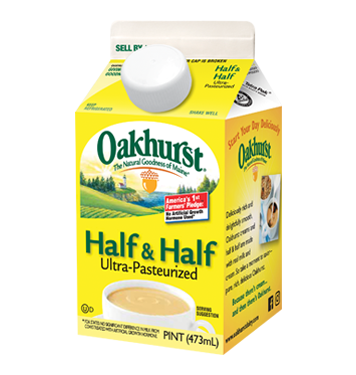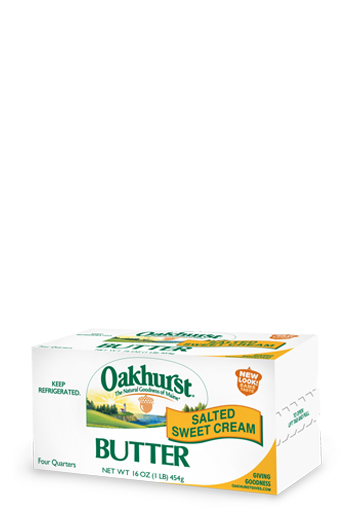Oakhurst Dairy FAQs
Over time, we have been asked many questions about Oakhurst, our products, the dairy industry, dairy farming, and health and wellness. Our goal is to help you stay informed on these topics. Here, you will find some of the most frequently asked questions, and we'll continue to update these questions as we receive more. If you have any additional questions, feel free to contact us.
My teenager has stopped drinking milk because he/she thinks it will make her/him fat. I am concerned about her/him not getting enough calcium for her/him bones. What can I tell her/him?
The teenage years are a crucial time for building bone that will last a lifetime. For only 90 calories, 8oz. of Oakhurst Fat-Free Skim milk provides 25% of an adolescent's daily need for calcium, plus vitamin D, protein, and at least 6 other essential nutrients needed for growth and development.
Do you give plant tours?
As much as we’d like to, unfortunately not. Our plant is a busy, active place – and it’s also a little on the snug side! So due to restrictive areas and new, more stringent OSHA rulings, we cannot allow plant tours.
Does Oakhurst purchase milk from farms that use antibiotics in their milk?
This is an easy one. No. FDA prohibits the use of antibiotics on animals whose milk is to be used for market. When a cow gets sick, our farmers separate her from the herd and treat her to get her better. After treatment is complete and the animal is tested, confirming there are no antibiotics remaining in the animal's system, then she can produce milk once more.
Where can I purchase your products?
Please visit the Contact Us section of our website and submit a request which includes your location and we would be happy to send a list of customers or distributors who serve the area in question.
I am hearing that many people in New England are vitamin D deficient. Why is this of concern and how much do I need in my diet?
It’s no secret that New England is sometimes not so sunny and warm. Because we have limited UV exposure much of the year in the New England area, many people are finding out that they are vitamin D deficient. Studies are suggesting numerous health concerns linked to this deficiency including several cancers, autoimmune diseases, osteoporosis, and diabetes. Besides sun exposure, there are ways to boost vitamin D by eating certain foods that contain it. Oakhurst milk is a source of vitamin D. For more detailed - information and recommended dietary amounts, please see our article on Vitamin D in the Dairy Case.
My child is an athlete and heard that chocolate milk might be a good idea after a workout. Could you tell me more about this?
Active bodies require energy in the form of carbohydrates. They also need protein to build and maintain muscle. After a bout of exercise, it is important to replace stored energy used during activity and to repair muscle. The most effective time to do this is shortly after exercise. Oakhurst low-fat chocolate milk has just the right mix of carbs and protein for recovery and in recent research, chocolate milk showed better results than some sports beverages. Plus, milk has 7 other essential nutrients not found in most sports drinks.
How can I add more milk into my day besides using it as a beverage?
One of the most common ways people enjoy milk is with cereal for breakfast or a snack. Milk used in place of water for cooking hot cereal or creamy soups is a great way to add milk to a daily diet – as well as a touch of rich, delicious flavor. And pudding made with milk is a healthy treat. If pudding’s not your thing, try a fruit and milk smoothie, which makes a healthy breakfast, snack or dessert. You can also make popsicles with Oakhurst flavored milks - a cool treat especially in the heat of summer! For cool days, try heating any of the Oakhurst flavored milks or have a latte.
I was just told by my doctor that I have high blood pressure and high cholesterol. Does this mean I should not drink milk?
No! Oakhurst Fat-Free Skim milk is the answer! Not only is it cholesterol and fat- free to fit a low cholesterol diet, but it contains potassium that can help to reduce blood pressure.
I see that Oakhurst makes buttermilk. What is the nutritional value of this product and how can I add it to my diet?
Although it sounds high in fat, Oakhurst buttermilk is fat-free and contains only 80 calories per 8oz.. It also contains the same amount of protein and calcium as the other Oakhurst milks. Buttermilk can be substituted for the oil in some baked good recipes (like muffins and pancake batter) to save calories and add nutritional value.
I hear that drinking fruit juice can add a lot of calories to my diet. I really like drinking Oakhurst orange juice at breakfast, but I do not want to gain weight.
Oakhurst 100% Orange Juice, can give you a boost of vitamin C, folate and other B vitamins, plus healthy "phytonutrients" important for health. In moderation, it can be a healthy part of your day. Oakhurst Orange Juice Plus Calcium, can provide an alternative source of calcium to help you meet your daily needs.
What Oakhurst product(s) can I consume if I am lactose sensitive?
Because Oakhurst Plus Nu-trish milk contains Probiotics (active cultures) it tends to be well-tolerated by many people who are lactose sensitive. It also looks and tastes just like regular milk, and has all the same nutritional benefits. Plus it can help boost your immune system!
I know drinking milk is important for children and teenagers for bone growth and development. Do I still need to be drinking milk as an adult?
As an adult, maintaining bone is hugely important. Bone is constantly undergoing repair and it needs nutrients like calcium to make that happen. The vitamin D in milk helps get the calcium into the bones. Other essential nutrients in milk also lend a helping hand as part of the maintenance crew.
My child learned in health class that a teenager needs 1300mg of calcium a day. When I look at a food label, it tells me "% Ca" which I believe is based on an adult's need. How do I figure out how that compares to my child's calcium needs?
It's easy! Just replace the "%" with a "0" to find out how many milligrams of calcium a food contains for the portion noted on the label. For example, Oakhurst milk contains 30% calcium for an 8oz. serving - that means 300mg.













